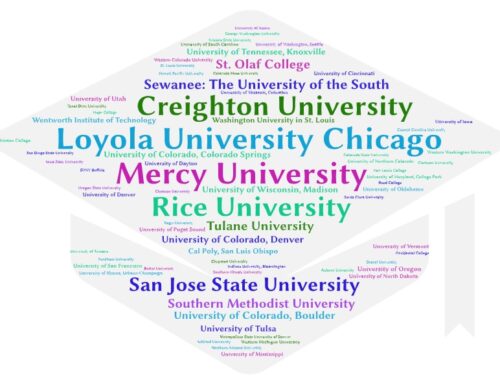 May 1 has come and gone, which means the majority of high school seniors have decided which college they’ll be attending in the fall. However, students who were placed on and chose to remain on a college’s wait list may feel very much in limbo. As they watch their friends get excited about and prepare to head off to their chosen schools, waitlisted students don’t yet know where they will end up.
May 1 has come and gone, which means the majority of high school seniors have decided which college they’ll be attending in the fall. However, students who were placed on and chose to remain on a college’s wait list may feel very much in limbo. As they watch their friends get excited about and prepare to head off to their chosen schools, waitlisted students don’t yet know where they will end up.
Such students should have committed to and made a deposit at a college that admitted them, so that if they aren’t offered admission at a college where they were waitlisted, they will still have a place to go. But what is the likelihood of students actually being admitted from a wait list?
Generally speaking, the answer is “pretty slim.” At many highly selective colleges, more applicants are waitlisted than the number of students the college can accommodate in its freshman class. For example, according to an Inside Higher Ed article, Brown University’s 2017 freshman class had 1,719 students. This year, the university accepted 2,566 students. (Colleges accept more students than they want in their freshman class because not all accepted students will enroll.) Brown offered another 2,724 students a spot on its wait list. As the article points out, “If every single admitted applicant rejected Brown’s offer, it would have wait-list candidates to spare in building a class larger than the last one.”
Over the last several years, schools have been putting increasing numbers of students on wait lists, and as those lists have gotten larger, the percentage of students accepted from them has gotten smaller. For instance, The Wall Street Journal reported that in 2012, the University of California, Berkeley, offered 161 applicants a spot on its wait list and later admitted 66% (106) of those students. In 2017, Berkeley put 7,459 students on its wait list and admitted only 27% (2,013) of them.
Colleges have valid reasons for increasing the size of their wait lists. As the average student applies to more schools, colleges face more uncertainty about where students will enroll. (That is, unless students apply under a binding early decision program.) Schools need to meet their enrollment targets in order to remain financially sound, so this uncertainty has led them to place more students on a wait list to ensure the colleges will have enough students to fill their freshman class.
Yet, this practice seems grossly unfair to students, and people who work with these students are starting to speak out about it. Cristina Quinn, a college consultant in Rhode Island, recently wrote about this issue on the message board of the National Association for College Admission Counseling, a professional organization for high school counselors, independent college consultants, and college admissions officers. Quinn’s post was quoted by the aforementioned Inside Higher Ed and Wall Street Journal articles, and she was interviewed on NPR.
Ms. Quinn wrote that when colleges don’t inform students how long their wait lists are and are not upfront about a student’s chances of being admitted, it “keeps FAR too many students hanging on with unrealistic hopes of being accepted, instead of focusing on the choices before them and being happy with one of them.”
Even when waitlisted students are accepted, things don’t always work out. By the time colleges admit students from their wait list, there often is little to no financial aid available, which for some students means attending that college is no longer possible. Furthermore, colleges may admit students from a wait list late into the summer, at which point a student may have already attended an orientation, selected fall semester classes, and made travel plans to go to a different school.
For students who’ve chosen to remain on a wait list, my advice is this: assume you will not be admitted and that you will end up going to the college where you made a deposit. Over the summer, rather than playing the “what if” game for the college where you were waitlisted, focus instead on the school where you enrolled. Join Facebook groups for the freshman class, attend admitted student events in your hometown, and if there is a required summer orientation, go with a positive attitude and an open mind.
By following the above advice, chances are you’ll start to get excited about the college to which you’ve committed. Not only will this temper your disappoint if you don’t get accepted from a wait list (and, again, the odds are that you won’t), but you’ll likely have a smoother transition and be much happier when you start school in the fall.





